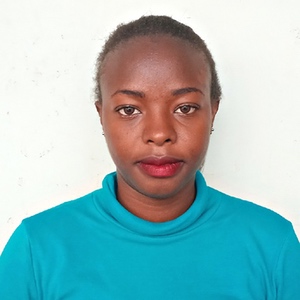Naliava Primary School is located in Naliava Village of Kakamega County in Western Kenya. It began in 1985 with just classes one to three. The parents were the ones who saw the need and contributed to start the initial school program.
The Salvation Army assisted the school this year by putting up some classrooms in April. The Community Development Fund also came up with a program of building eight classrooms, but they are not yet complete.
The students arrive at school as early as 6:30am and start cleaning their classrooms and the compound. From 7:10am to 8am they go to assembly, then back to class to have their lessons at 8:20am.
In between, they have a tea break at 10am and then go back to class for lessons till 12:40pm lunch. There are afternoon classes and then games. Students must return from the field for a short study hall until dismissal at 5pm.
Water
Students travel to a nearby protected spring to collect water. They place their jerrycans below the discharge pipe so that water can directly flow into the containers, but when there are many people at the spring wanting to fetch the same water, some individuals just submerge their containers under the muddy water on the ground until they get it full.
Water gathered by students is stored in the same containers used to fetch it, inside the classrooms. One class is selected to pour their water into a big saucepan to be used for kitchen work.
Some students fetch water from the spring that is on the ground because they are in a hurry to take water back to school. The students get diarrhea diseases as a result of that and unsafe water storage.
The principal is convinced that having enough water and latrines in the compound will help shun problems of diarrhea among other challenges students were predisposed to due to the shortage.
Sanitation
The school has eight latrines of which two are for girls and six for boys. The lines are so long, preventing access to the toilet which also leads to a waste of time.
"The school is really in dire need of the facilities. We have a lot of pupils in the school of which the toilets we have are not enough for the pupils to use," Headteacher Daniel Mukoshi said.
In 2016, the Salvation Army came in to assist after the school had been closed down by public health officials. The boys’ latrines are poorly ventilated. Latrines for both genders are also too close to each other, therefore the school feels the public health officers from the government will insist that they build latrines for one gender at a distant place during their next visit.
"We need sanitation facilities at this institution, as you can we see we have a shortage of latrines and there is no source of water within the school compound. Please do not deny us that chance, we desperately need facilities." Mukoshi implored.
Here’s what we’re going to do about it:
Training
Training will be held for two days. The facilitator will use PHAST (participatory hygiene and sanitation transformation), ABCD (asset-based community development), CTC (child to child), lectures, group discussions, and handouts to teach health topics and ways to promote good practices within the school. The CTC method will prepare students to lead other students into healthy habits, as well as kickstart a CTC club for the school.
Handwashing Stations
This CTC club will oversee the new facilities, such as handwashing stations, and make sure they are kept clean and in working condition. The two handwashing stations will be delivered to the school, and the club will fill them with water on a daily basis and make sure there is always a cleaning agent such as soap or ash.
VIP Latrines
Two triple-door latrines will be constructed with local materials that the school will help gather. Three doors will serve the girls while the other three serve the boys. And with a new source of water on school grounds, students and staff should have enough to keep these new latrines clean.
Rainwater Catchment Tank
A 50,000-liter rainwater catchment tank will help alleviate the water crisis at this school. The school will also help gather the needed materials such as sand, rocks, and water from the spring for mixing cement. Once finished, this tank can begin catching rainfall that will be used by the school’s students and staff.
We and the school strongly believe that with this assistance, standards will significantly improve. These higher standards will translate to better academic performance!

 Rainwater Catchment
Rainwater Catchment
 Rehabilitation Project
Rehabilitation Project




































